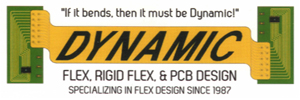What is an electronic PCB board?
PCB means = printed circuit board. It comprises of components of an electric circuit that includes dense lines and positioning holes. Since electronic printing is the core of a PCB, hence the term, “printed circuit board”.
What is PCBA?
The printed circuit board PCBA + assembly is short. The PCBA is empty after the PCB on the assembly board + SMT positioning member, and then the whole assembly through the DIP plug machining process.
Difference between PCB and PCBA:
If you are working with electronic PCB design products, we are sure you must have heard about the printed circuit board (PCB) and printed circuit board assembly (PCBA). So let us find what these are and what differentiates a PCB from a PCBA.
PCB – Printed Circuit Board
A PCB is an automated foundation on which electronic circuit board components mount complete an intended circuit. The electronic PCB board itself contains a conductive pattern or trace, and a substrate typically made of glass epoxy material.
As an example, the basic PCB can have 4, 6, or 8 signal layers, with 4 and 6 layer PCBs being the most common. The PCB pattern comes from the printed component, a printed circuit, or a combination of both. The conductive pattern is printed or inscribed on an insulating epoxy glass according to the predetermined design.
How do you use an electronic PCB board?
PCB electronic circuit board design customization makes it useful in electronic devices such as televisions and radios, cell phones, cameras, and computer parts such as motherboards and graphics cards. Electronic circuit board designs come in handy when manufacturing lighting equipment, medical equipment, the automotive industry, and industrial machinery.
The PCB is an essential structure in devices as it supports electronic components and serves as an electrical connection for elements. The unique characteristics of the PCB are as follows:
- High density, lightweight, and small cables are ideal for miniaturizing the electronic equipment in question.
- Due to graphical consistency and repeatability, PBC saves on equipment maintenance, debugging, and inspection time.
- The standardization of production reduces the cost of electronic devices.
PCBs come in different forms as follows:
- Single-layer PCB
A single-sided PCB is the simplest and most widely used PCB in most electronic devices, as it is easy to design and produce. The single-layer PCB coatings comprise of layers of conductive material, often copper. A layer of solder mask to protect the PCB from oxidation with silkscreen marks. This single layer PCB is common among low-cost bulk production applications such as printers, radios, and calculators.
- Double-layer PCB
Also known as, a double-sided PCB, this electronic circuit board has a layer of conductive material, usually copper, applied to the top and bottom sides of the board. The main advantage of this electronic PCB board over its single-sided counterpart is greater flexibility and a small footprint that makes your circuit compact. Applications may include industrial controls, UPS systems, converters, telephones, power monitoring units, amplifiers, and HVAC applications.
- Multilayer PCB
This type of electronic printed circuit board comes with more than two conductive layers of copper. The board is secure as it has glue sandwiched between the insulations to ensure that the circuit remains free from damages by excess heat. In addition, PCBs are necessary for complex applications such as satellite systems, GPS technology, file servers, and data storage equipment and medical equipment. Other types of PCB include a flexible PCB, rigid PCB, and flexible, rigid PCB.
PCBA – Printed Circuit Board Assembly
The abbreviation for Printed Circuit Board + Assembly. PCBA is a complete process of passing depopulated electronic PCB board through surface mount technology (SMT) processes. These processes provide for all electronic components soldered onto the blank PCB and include solder paste printing, component placement, hand, wave, or reflow soldering, and various forms of quality control inspection.
PCBA: components of electric circuit
During an assembly process, an empty electric PCB board is padded or filled with electronic components to form a printed circuit assembly (PCA) or PCBA. With the use of through-hole technology, electronic components having conductive pads around them. When electronic components anchored to both sides of the board, the components on one side of the board must adhere to the board by using glue before soldering.
PCBA board tests:
- With the power off, the board can be inspected visually or using an automated optical inspection tool.
- When powered off, an analog signature analysis performance known as the “shutdown test.”
- With power on, loop tests occur.
- Finally, a bump test helps establish if the PCB is in proper condition.
Conclusion:
PCBA refers to a processing flow or the entire circuit board. Whereas, the PCB refers to an empty printed circuit board without electronics.

